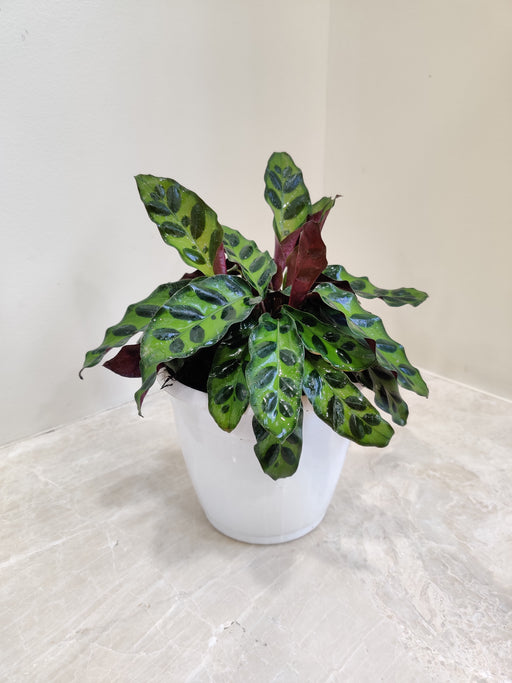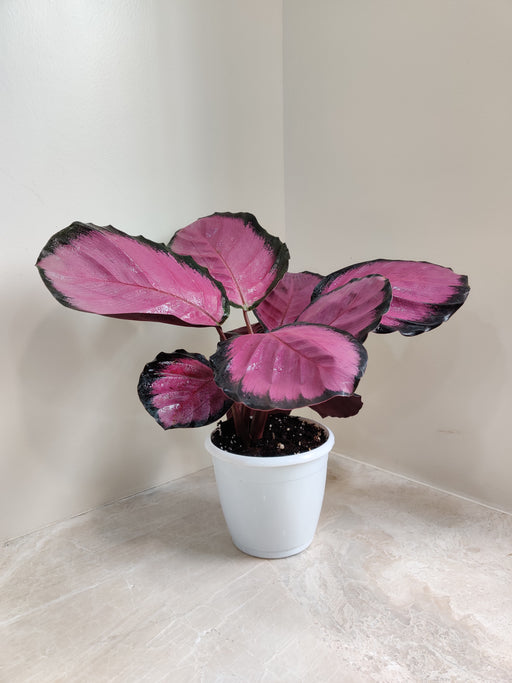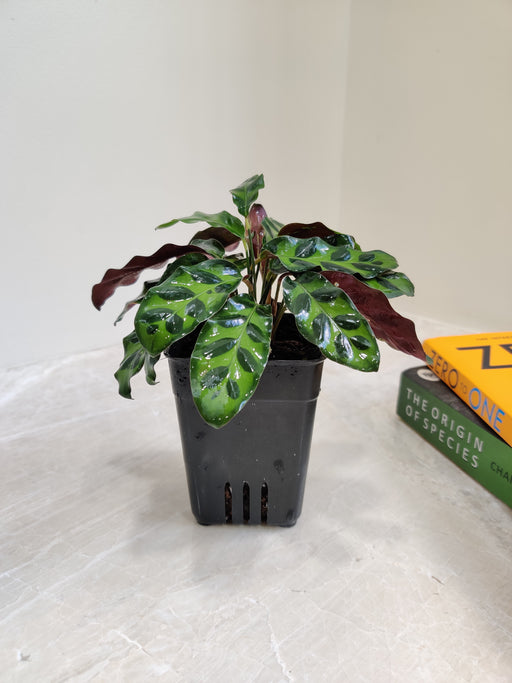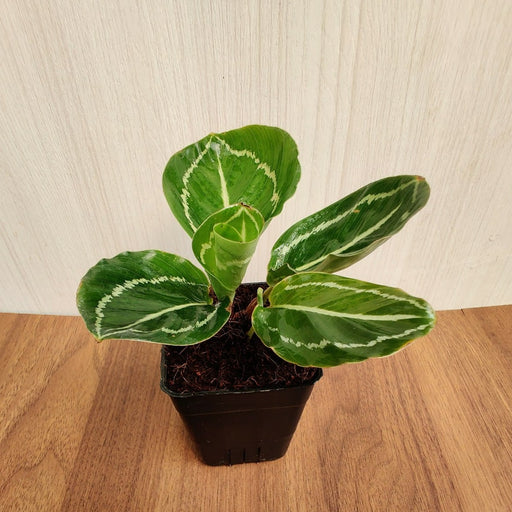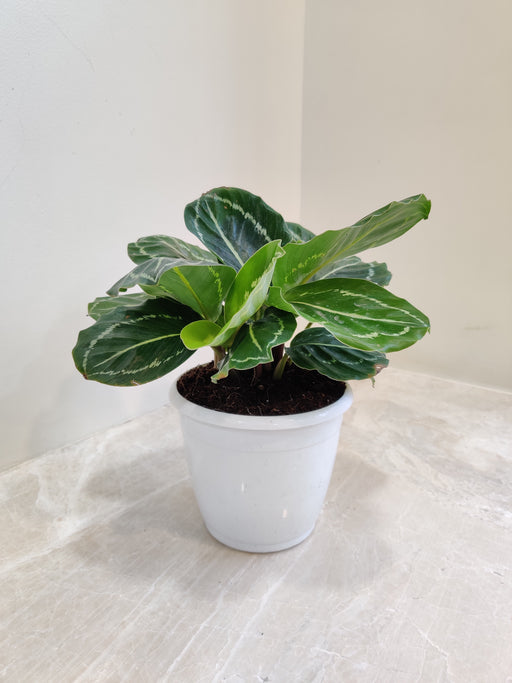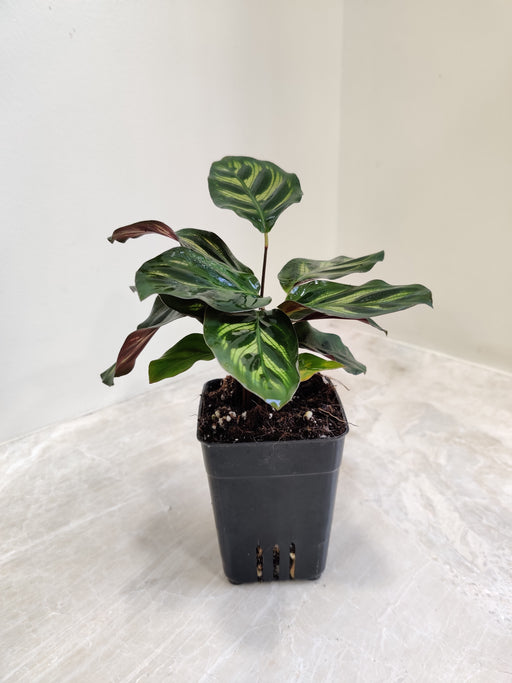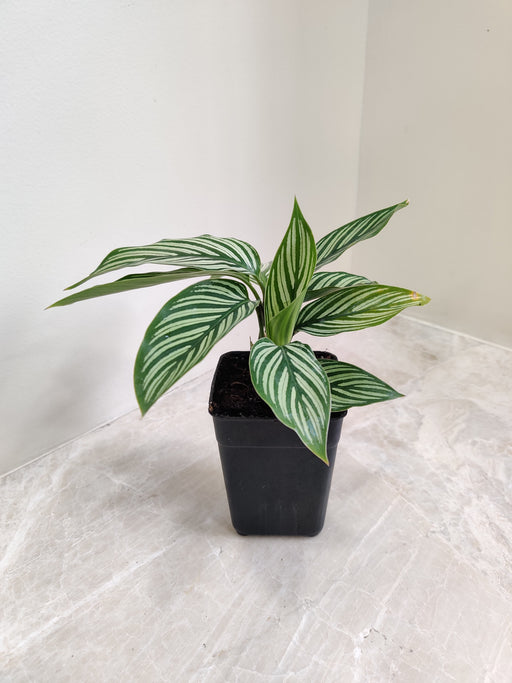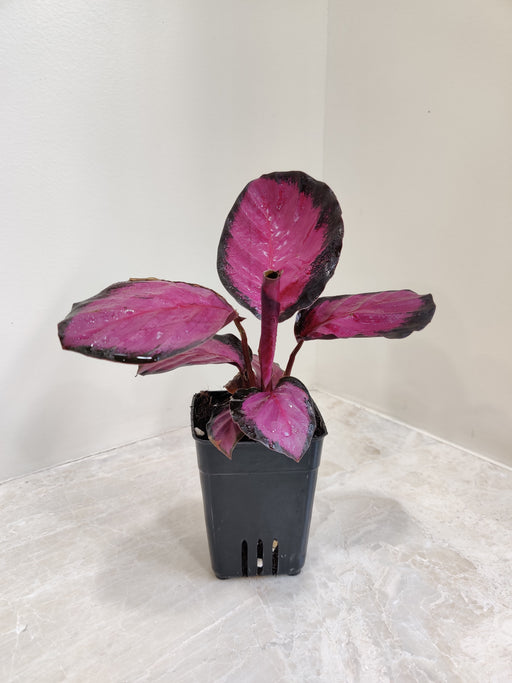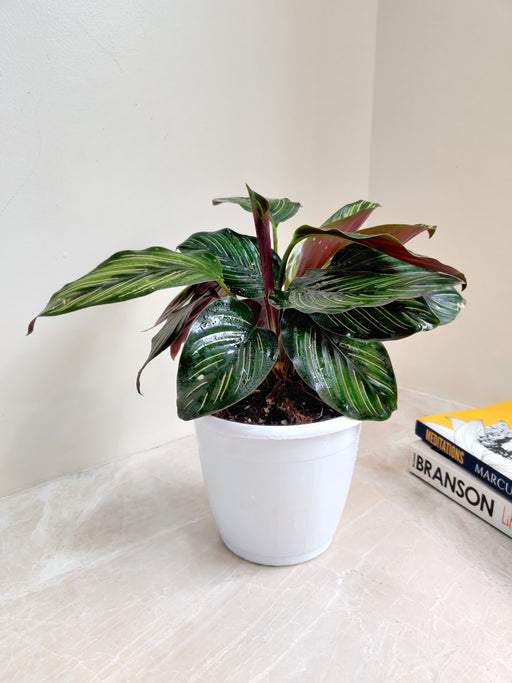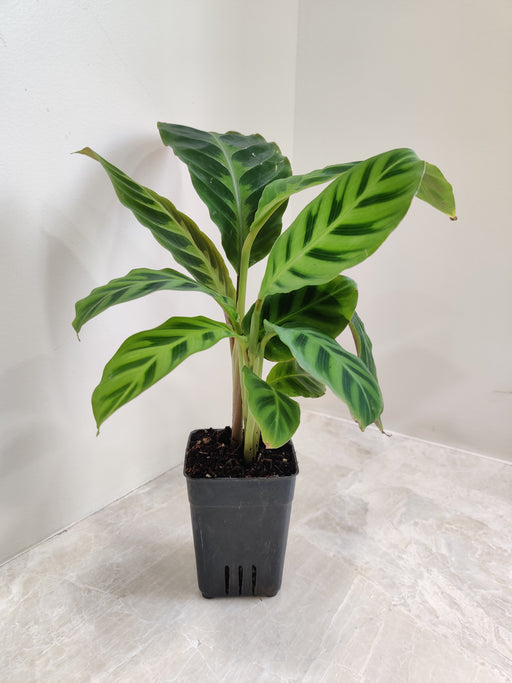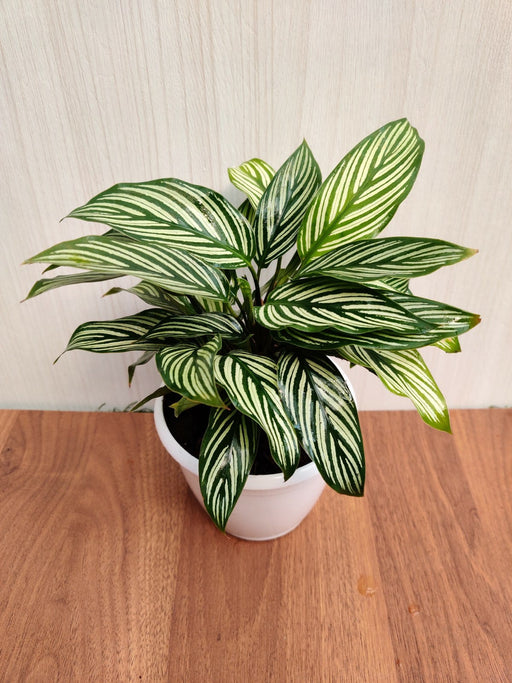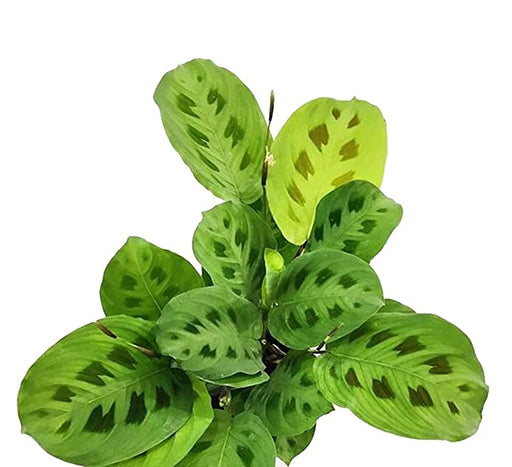An exotic indoor plant that has glossy leaves in luscious hues of green with stunning veinings and brushstrokes. Calathea plants are widely bought for their exotic appearance. Calathea plants are also known as the prayer plant. Admired for its foliage, these low-maintenance plants can stay thriving if you show them a bit of love and care.
▶️Calathea Plant Care
Create a serene and refreshing indoor jungle with these low-maintenance Calathea plants. These plants are known for their colorful and exotic leaves and tolerate occasional neglect. Whether you have a bright, sunny spot or a low-light corner, Calathea plants will bring life and beauty to your home or office.
- Light
Calathea plants appreciate bright and indirect sunlight. These indoor plants will need consistent but minimal care to thrive and produce pleasing green stalks of leaves. Too much light can burn their exotic leaves and too little can make them weak and leggy.
- Water
Water Calathea when the upper layer of the soil is completely dry. Be cautious of water-logging which leads to root rot. Choosing a planter with good drainage can help prevent this issue.
- Soil
To ensure your Calathea plants thrive, use well-draining soil with rich nutrients. A potting soil and perlite mixture is highly recommended to keep moisture and allow for drainage. The right soil will promote the healthy growth of your Calathea plants.
▶️Calathea Prayer Plant Varieties:
Calathea prayer plant is a genus of over 300 species of tropical plant that has a unique habit of folding leaves at night.
▶️Calathea Zebra Plant
Calathea Zebra plant, also known as Calathea zebrina, is a flashy houseplant that is sure to add a touch of elegance to any indoor space. With its unique zebra-like patterns on its leaves, it's no wonder this plant has gained popularity among plant enthusiasts. Hailing from Brazil, this indoor plant is one of the most sought-after plants for its striking appearance.
▶️Calathea Zebrina Plant
Zebrina is another striking variant of Calathea. Zebrina plants are known for their colorful foliage, which can be variegated with green, purple, and white. Zebrina plants are also known for their fast growth and easy propagation.
▶️Calathea Lutea
Cigar plant or Havana cigar are some other commonly used names for calathea lutea. C. lutea can tolerate a moderate amount of sun exposure. This species is perfect for landscaping tropical or Balinese-style gardens. It can also serve as an excellent screening plant or a potted specimen on a balcony. Although sometimes recommended as an indoor plant, Calathea lutea requires bright conditions and overhead light to prevent it from growing at an odd angle.
▶️Calathea Plants Types
This tropical indoor plant has over 300 species with extraordinarily colorful leaves. Some of the popular and best-selling calathea types are:
- Calathea Compactstar
- Calathea Ornata Sanderiana Plant
- Calathea Freddie Plant
- Calathea Insignis Plant
- Calathea Leuconeura Plant
- Calathea Rufibarba Plant
- Calathea Orbifolia Plant
- Calathea Dottie Plant
- Calathea Roseopicta Medallion Plant
- Calathea Amagris Plant
▶️How to propagate Calathea plant?
If you want to propagate your Calathea plant, the best way to do it is by division. This involves breaking the main plant into multiple plants at the roots.
Here are some simple steps you can follow:
1. Get all the necessary materials.
2. Take your plant out of its pot.
3. Carefully remove the soil from the roots.
4. Look for natural separations in the roots where you can divide the plant.
5. Gently divide the plant into multiple sections.
6. Pot each individual plant section.
7. Water each plant section thoroughly.
▶️Interesting facts about Calathea Orbifolia
One of the interesting facts about the Calathea Zebra plant is its ability to "fold" its leaves in the evening, creating an interesting visual effect. This movement is known as nyctinasty, and it is a natural process that helps the plant save energy during the night. Don't be alarmed if you notice your plant's leaves moving throughout the day; it's just a sign that your plant is adjusting to its environment.
Are calathea plants toxic to cats?
Calathea plants are SAFE and NOT toxic to your pets. You can safely bring these indoor plants home and enjoy their visually aesthetic appearance.
Can calathea grow in water?
Yes, Calathea can grow in water. By simply placing a stem cutting in a jar or vase of water, it will begin to root within a couple of weeks.
Is calathea an indoor plant?
Yes, calathea is an air-purifying indoor plant. It adds a natural beauty to your home with air-purifying benefits and with their exotic leaves.
















